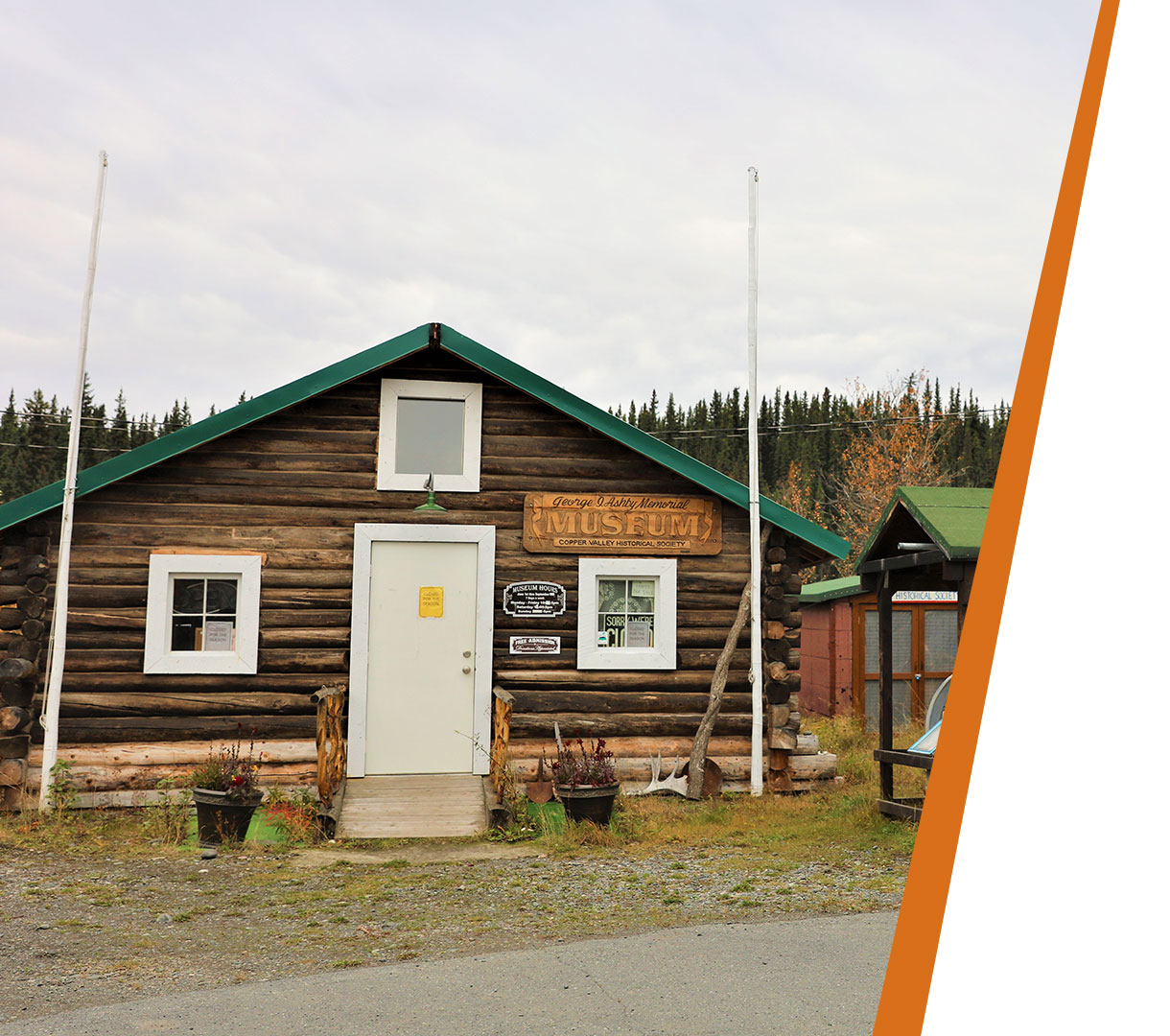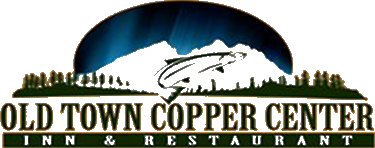LOCAL HISTORY

THE MANY LIVES OF COPPER CENTER
IT SITS AT THE BEND OF THE ROAD, SIMPLE and silent. There are no windows, just the entryway commonly found in snowy environments. The once-tan plywood sheathing now frames a gray two-story rectangle that was built after a 2012 fire destroyed the original building. Looking at the structure now, it’s difficult to imagine the proud Copper Center Lodge that occupied the spot for so many years and is listed on the National Register of Historic Places. Incarnations of the lodge went from rough, cold accommodations to classic log cabins, and then to a traditional lodge-type dwelling, which supported travelers as varied as hunters, military personnel, prospectors, National Park Service employees, pipeline workers, and even tourists.
The history of this hostelry situated on the Copper Center loop road about 100 miles north of Valdez is special because of its human stories, unique family involvement, and microcosm of what was happening in the Alaska of that era. Old Copper Center began when erstwhile gold seekers, who were trying to cross the Valdez Glacier to reach the Klondike, found it too difficult. They chose to stay, and soon entrepreneurs were providing materials and services to that group, as well as to the nearby Native village. The community of Copper Center, as well as the evolving chain of Copper Center lodges, lay along the historic Valdez to Eagle Trail, which began as a Native trail and then became the route of the first planned Alaskan telegraph line. The trail was upgraded to a wagon road in 1910, to automobile standard in the 1920s, and finally paved in 1957 as the Richardson Highway.

The George I. Ashby Memorial Museum
The George I. Ashby Memorial Museum is housed in two rustic log cabins next to the historic Copper Center Lodge.In the first log building, the visitor can view many historic photos, documents, items from the Kennicott Copper Mine, treasures from “Old Alaska”, and some items reflective of the area’s Native cultural history. The second log building is dedicated to the 1898 gold rush and is filled with photos and artifacts from that time period.Within the museum are handmade, local items available for purchase, as well as books pertinent to the area’s history.
The museum runs strictly on donations. While admission is free, your donations are welcome, appreciated, and needed. The museum is operated by the Copper Valley Historical Society, a non-profit group of volunteers, who opened the museum in 1984. Museum Hours: June 1 – September 15 11 am – 5 pm 7 days a week
